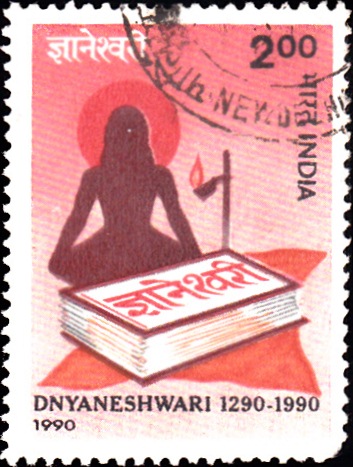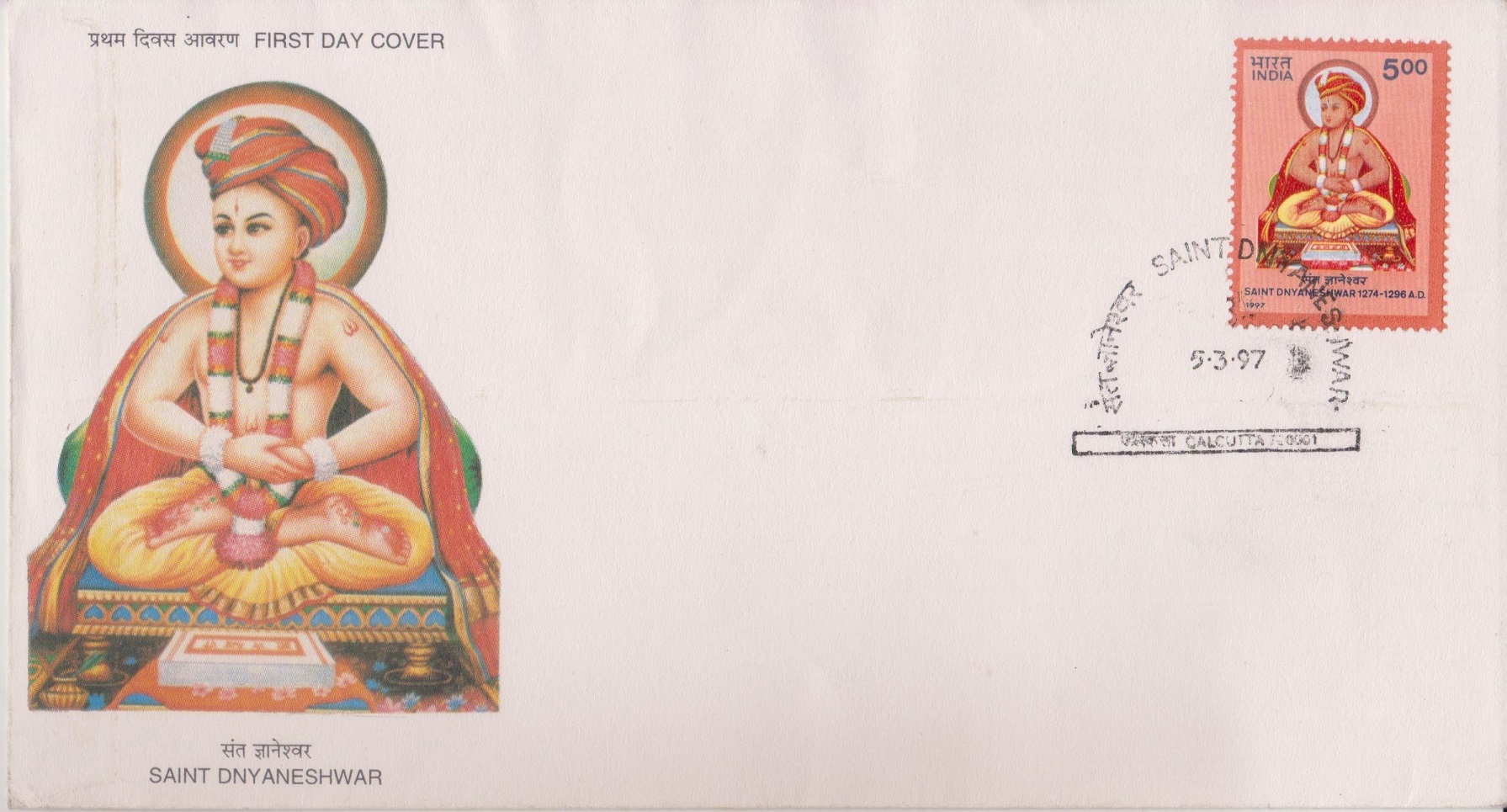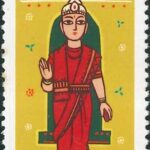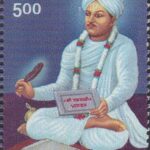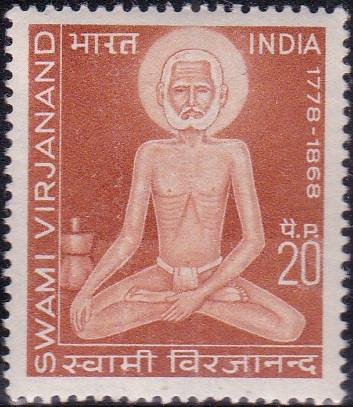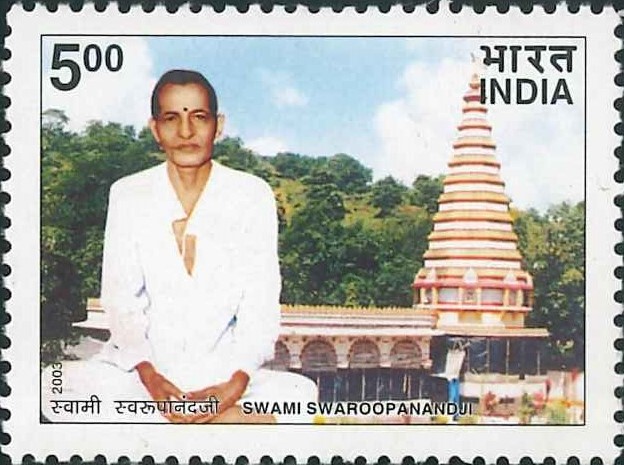
Swami Swaroopanandji
A commemorative postage stamp on the Birth Centenary of Shree Swami Swaroopanand, translated works of Sant Dnyaneshwar in modern Marathi – Dnyaneshwari, Amritanubhav and Changdev Prashasti :


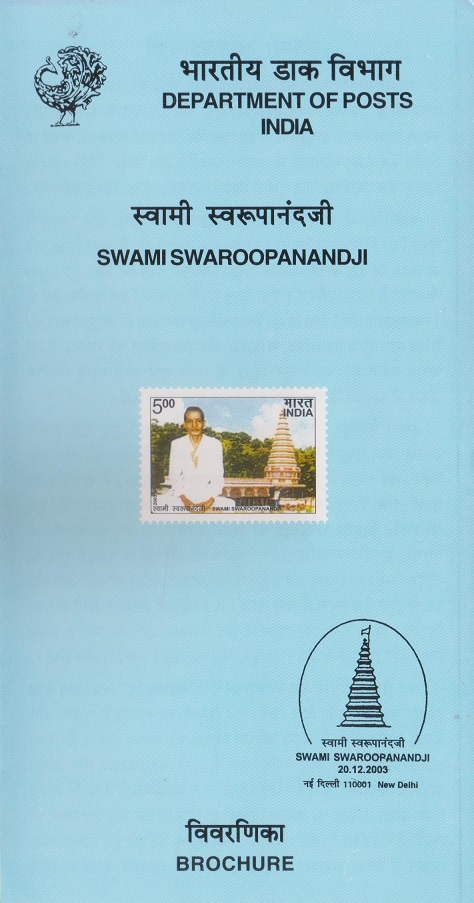 Issued by India
Issued by India
Issued on Dec 20, 2003
Issued for : The Department of Posts commemorates his birth centenary with this issue.
Credits :
Layout of Stamp : Sudha Chowdhry, based on material provided by the proponents.
FDC : Mallika Das
Cancellation : Alka Sharma
Type : Stamp, Mint Condition
Colour : Four Colour
Denomination : 500 Paise
Overall size : 2.9 x 3.91 Cms.
Printing size : 2.9 x 3.91 Cms.
Perforation : 13 x 13
Paper : Imported unwatermarked stamp paper
Print Quantity : 0.4 Million
Number of Stamps per sheet : 40
Printing Process : Photo Offset
Printer : Eagle Press Private Ltd.
Name : Ramchandra Vishnupant Godbole
Born on Dec 15, 1903 at Pawas, Ratnagiri district, Maharashtra, India
Died on Aug 15, 1974 at Pawas, Ratnagiri district, Maharashtra, India
About :
- Swami Swaroopanandji was born Ramachandra Vishnu Godbole at Pawas, Ratnagiri on 15th December, 1903. His keen interest in religious scriptures was evident from childhood and was fostered by his teachers at the Aryan Education Society at Bombay. He graduated from the Tilak Maharashtra Vidyapeeth, Pune.
- However, the thoughts of nationalistic leaders Shri Lokmanya Tilak and Mahatma Gandhi influenced him greatly, urging him to offer his services to his nation rather than to pursue higher studies. Young Godbole returned to Pawas to set up a school, aptly called “Swavalambanashram”. The education imparted here inculcated patriotism, independence and self-sufficiency, in tune with the spirit of the times. The school ran from 1922 to 1927 but he was forced to give it up due to poor local response.
- Unfazed, he returned his enthusiasm towards the national movement and spiritual growth. In 1923, he had been initiated into the Nath Sect by his Guru, Baba Maharaj Vaidya. But while seeking spiritual advancement, he continued to express his nationalistic feelings through fiery speeches. He was ordered not to leave the precincts of Pawas. But he disobeyed the orders to go to Pune to participate in a nation-wide strike. He was arrested in 1930 along with other compatriots. This term in jail proved to be another milestone in his life, giving him time for meditation.
- After his release, his Guru authorised him to lead the Sect, naming him “Swaroopanand”. A near-death experience in 1934 brought about a complete change in him and his life style. For the rest of his life he stayed at “Anant Niwas” in Pawas till his final rest or “Mahasamadhi” on 15th August, 1974. His work focussed in these forty years on making the treasures of Marathi Literature and thought embodied in the writings of Sant Dnyaneshwar accessible to the common people and helping them in their spiritual advancement. It was difficult for the ordinary people to comprehend the finer aspects of the Dnyaneshwari, Amritanubhav and Changdev Prashasti because they were composed in Marathi as prevalent hundreds of years ago. Swami Swaroopanand’s translations of these volumes made them available and comprehensible. Personifying the virtues inculcated by the “Bhagavad Geeta” which moulded his personality and thinking, Swaroopanandji combined devotion with detachment and knowledge.
- Text : Based on material provided by the proponents.


